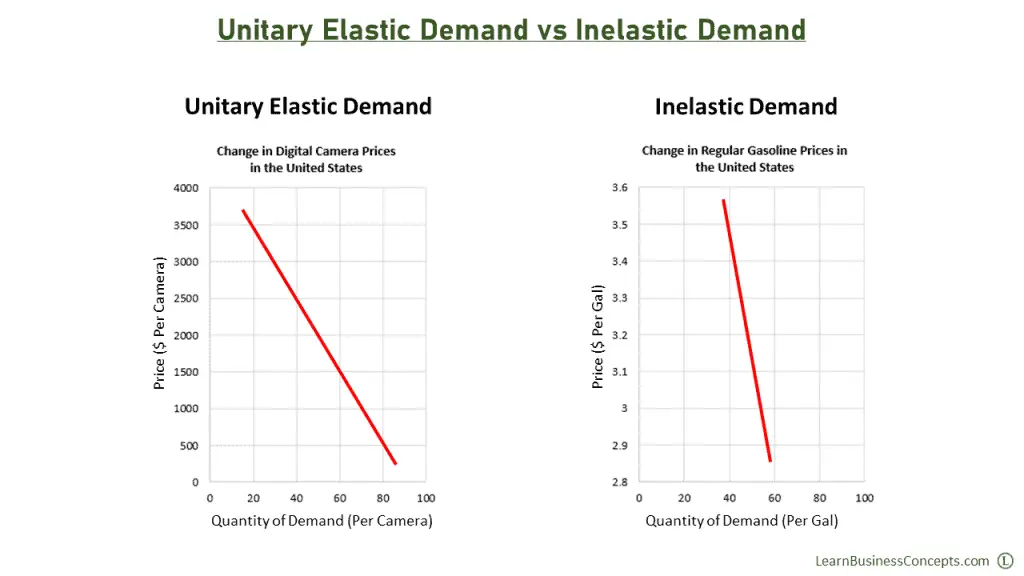Difference Between Unitary Elastic and Inelastic Demand
Difference Between Unitary Elastic and Inelastic Demand
Please find the below table for the difference between unitary elastic demand and inelastic demand,
| Unitary Elastic Demand | Inelastic Demand |
|---|---|
| Demand changes in a similar proportion to a change in price. | Demand changes in a small variation in response to a high variation in a price change. |
Products that have unitary elastic demand display an equal shift in the demand, in response to the change in price. | Products that have inelastic demand display a small shift in the demand, in response to a change in price. |
| Example: Assume if the price of a digital camera increased by $500, how it will affect your purchase? Generally, there would be an equal level of demand decrease for this. | Example: Assume if the price of regular gasoline gallon increased by $0.50, how it will affect your gas purchase? There will be only a minor variation. This is because gasoline is a necessary product for us to meet our transportation needs. |
| Products like mobile phones, home appliances, essential electronic products are considered unitary elastic. | In general, gasoline, utilities, tobacco products, medical treatments, and prescription drugs are inelastic since these products are not easily replaceable with other products. |
The elasticity coefficient of unitary elastic demand is equal to one (1). | The elasticity coefficient of inelastic demand is less than one (1). |
Ed = 1 | Ed < 1 |

Differences between Unitary Elastic Demand and Inelastic Demand are explained in the below points,
- Products that have unitary elastic demand display an equal shift in the demand, in response to the change in price.
Products that have inelastic demand display a small shift in the demand, in response to a change in price. - In unitary elastic, demand changes in a similar proportion to a change in price.
In inelastic, demand changes in a small variation in response to a high variation in a price change. - Example of Unitary Elastic Demand: Assume if the price of a digital camera increased by $500, how it will affect your purchase? Generally, there would be an equal level of demand decrease for this.
Example of Inelastic Demand: Assume if the price of regular gasoline gallon increased by $0.50, how it will affect your gas purchase? There will be only a minor variation. This is because gasoline is a necessary product for us to meet our transportation needs. - Products like mobile phones, home appliances, essential electronic products are considered unitary elastic.
In general, gasoline, utilities, tobacco products, medical treatments, and prescription drugs are inelastic since these products are not easily replaceable with other products. - The elasticity coefficient of unitary elastic demand is equal to one (1). Ed = 1.
The elasticity coefficient of inelastic demand is less than one (1). Ed < 1.
Recommended Articles:
- Price Elasticity of Demand Explanation
- Types of Price Elasticity of Demand – Full Explanation
- Unitary Elastic Demand: Definition, Examples, Curve
- Inelastic Demand: Definition, Examples, Diagram
- Perfectly Elastic Demand: Explanation with Examples
- Difference Between Elastic Demand and Inelastic Demand
- Explanation and Calculation of Elasticity Coefficient


